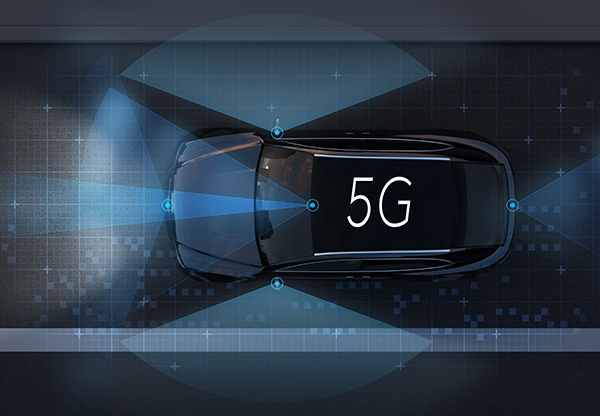Written by Mark Evilsizor
From his column Church Tech
 Technology is a constantly changing landscape. New capabilities come to market, and it may not be easy to discern whether the expense of an upgrade is warranted. Vendors don’t always help either. Last year, one company rebranded their 4G network as 5GE. The upgrade primarily consisted of changing the numeral from 4 to 5 and adding an E to the display. The connection to the Internet was not noticeably different from that of other 4G providers.
Technology is a constantly changing landscape. New capabilities come to market, and it may not be easy to discern whether the expense of an upgrade is warranted. Vendors don’t always help either. Last year, one company rebranded their 4G network as 5GE. The upgrade primarily consisted of changing the numeral from 4 to 5 and adding an E to the display. The connection to the Internet was not noticeably different from that of other 4G providers.
But with the rollout of advanced Wi-Fi and 5G technology, the wireless world is changing. This means 2020 could be a great year for updating your devices that access the Internet wirelessly, and for upgrading hardware in your organization’s network that provides wireless access for staff and visitors. Let’s look at what’s ahead.
Wi-Fi 6
Many public places interested in bringing folks together offer Wi-Fi, but the quality of this service has varied. If you aren’t steeped in technology, it started with the offering of a variety of Wi-Fi standards, e.g. 802.11b, 802.11ac, 802.11n, 802.11ax, etc. So the standards-setting body decided to simplify things and designate Wi-Fi 5 as the best version for 2018/2019, with Wi-Fi 6 (certified in late 2019) as today’s best. Wi-Fi 6 offers a variety of improvements over previous connecting routers or access points and some speed improvements, but more significantly it does a much better job helping lots of people and their multifarious devices connect when they are gathered. This can be beneficial for connections in your home for such items as smart speakers, appliances, video games, phones, PCs, e-readers, etc., or in public like sports stadiums, airports, or in your church. Wi-Fi 6 also includes a strong security standard which certified Wi-Fi 6 network equipment is required to have. If your Wi-Fi gear is a few years old and you are ready to upgrade, be sure and get Wi-Fi 6-certified equipment.
5G
The other big change is occurring in the technology your cell phone uses to connect to your mobile provider’s network. Currently most of us use LTE for this connection, but in 2017 the 5G standard was established, and carriers have been conducting tests in a growing number of cities since then. Super Bowl LIV was one such venue where a provider touted 5G coverage for portions of Hard Rock Stadium in Miami. 2020 is anticipated to be a breakout year for 5G with the release of Android and Apple phones anticipated to fully support the latest standards, and with expansion of the technology into more cities. The benefits of 5G are similar to those of Wi-Fi 6: more bandwidth, better support for simultaneous devices, and reduced latency (the amount of time between taking an action and seeing a response).
5G is a foundational element to many hopeful electronic activities. With the reduced latency, more remote medical uses will be possible. A specialist in a city could perform an emergency surgery in a distant location with instantaneous control and response of surgical equipment. Another use widely discussed is the ability of vehicles being able to communicate with each other. For instance, if a car slams on its brakes, traffic behind it would instantly receive the message electronically and automatically slow down faster than we humans could respond. I can also imagine my car sensing a major slowdown a mile ahead and routing me around it. Of course, if everybody’s car does this, the logjam may just move to a side road. Local governments might also find 5G helpful by using it to connect sensors so that when a water main breaks, staff could be alerted to the location, or if a traffic light malfunctions, police and repair personnel could be sent to the scene right away.
A few have suggested that with 5G mobile connections, Wi-Fi may no longer be needed. While this may happen down the line, most do not expect it for several years. One reason is that 5G’s limited signal has a difficult time covering indoor spaces due to obstacles, such as walls, floors, etc. Another reason is that businesses enjoy controlling, shaping, and filtering the network within their space, and this is more easily done with Wi-Fi than with a carrier-provided 5G network. What is more likely is that organizations will use 5G as a backup or primary connection to the Internet, potentially replacing cable or fiber connections.
5G is also likely to provide an affordable option for folks living in rural areas where running landlines is cost-prohibitive. It will be interesting to see how carriers price 5G service. It may be a good idea to pay particular attention to bandwidth quotas which have typically been a consideration for mobile phone agreements, but not for household and organizational contracts.
With the advent of the interconnectedness of electronic devices afforded by Wi-Fi 6 and 5G, the “Internet of Things” is drawing closer. If you have been waiting to upgrade your phone or your organization’s Wi-Fi network, it may be time to make the move. It’s likely the new gear and its capabilities will place you on solid footing to make use of the airwaves for years to come.
Mark Evilsizor has worked in Information Technology for more than 20 years. He currently serves as head of IT for the Linda Hall Library in Kansas City, Mo. Views and opinions expressed are strictly his own.
